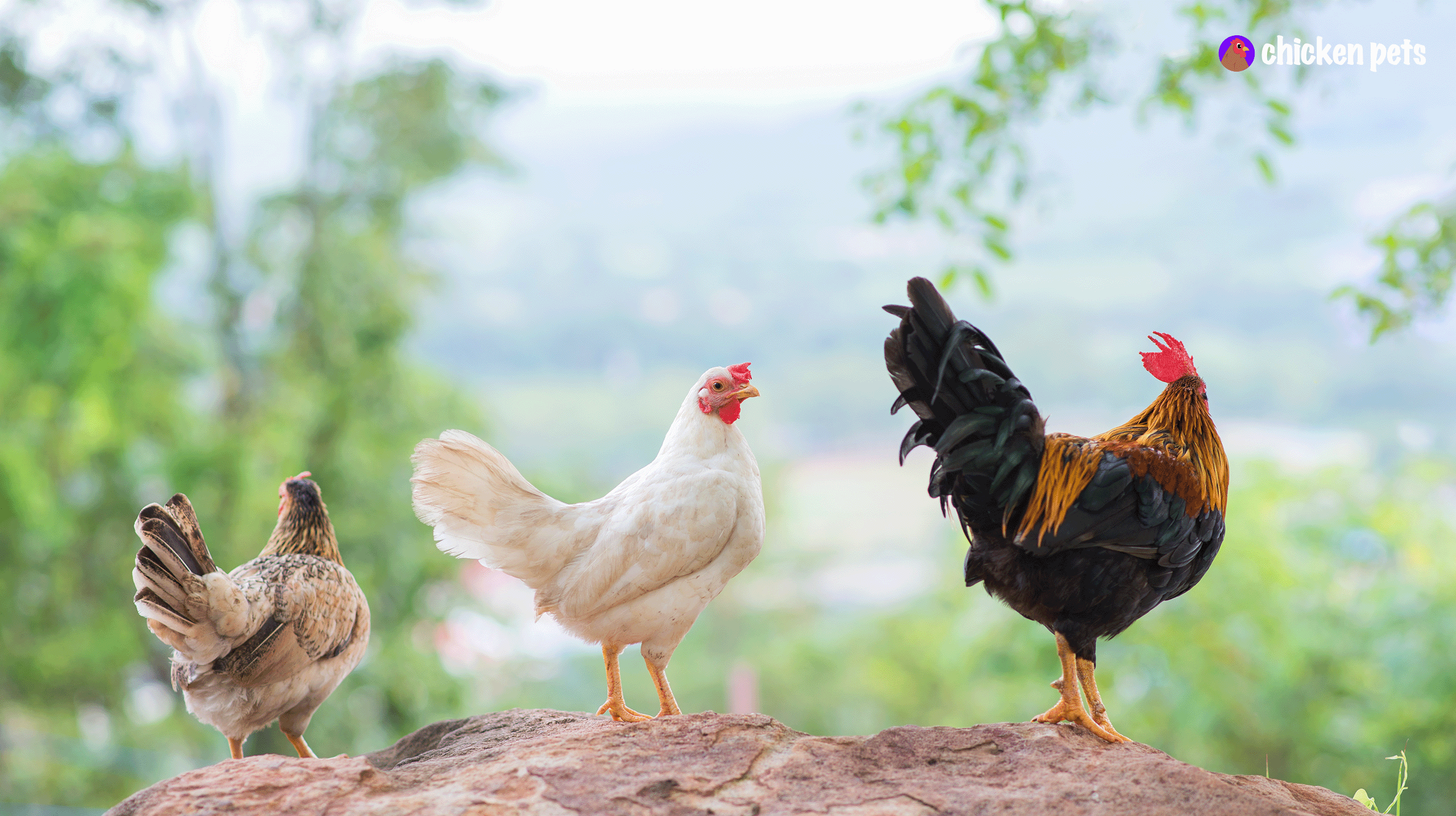Chickens come in all shapes, sizes, and colors. Small chicken breeds, such as bantams or Silkie chickens, are becoming increasingly popular among backyard chicken enthusiasts for their unique qualities. Not only do these little chickens make great pets with their docile temperaments, but they also offer a variety of benefits when compared to standard-sized chickens.
What is the smallest chicken breed?
The smallest chicken breed is the Bantam chicken. Bantam chickens are smaller versions of regular chickens and can weigh as little as 16 ounces. Bantam chickens generally range in size from 16 ounces to 2 pounds and can be as small as 6-8 inches in height and 8-12 inches in length. They are typically about one-fourth to one-half the size of regular-sized chickens.
Bantam chickens are popular among backyard chicken owners because of their small size and ability to lay eggs.
There are many types of Bantam chickens.
Some of the most popular breeds include the Dutch Bantam, the Japanese Bantam, and the Belgian Bearded d’Anvers. We will cover a bunch more later in this post. Bantam chickens come in various colors and patterns, so there is a breed to suit every taste. They are also known for their friendly personalities, which make them great pets.
Are all Bantam chickens small?
Yes, all Bantam chickens are small compared to regular-sized chickens. Bantam chickens are generally about one-fourth to one-half the size of regular chickens. This makes them a good choice for people with limited space for their chickens, such as those who live in urban areas or have small backyards. Because they are small, Bantam chickens can also be easier to handle and care for than larger breeds.
The benefits of small chicken breeds.
Small chicken breeds are great for family farms or backyards due to their efficient space usage and low maintenance needs. While larger breeds will require more feed and a bigger area to support them, many small breeds can do well in the same amount of space as other domestic poultry.
Also, since they typically have smaller egg sizes, smaller chickens produce eggs faster than their larger cousins. Additionally, some breeds, such as silkies and frizzles, tend to be far calmer than larger birds, making them less likely to exhibit any stress behavior.
For those interested in having backyard chickens, little chicken breeds are an excellent way to produce nutritious eggs without a large footprint or high maintenance demands.
Care and housing needs of small chicken breeds.
Small chicken breeds should have access to ample shelter and protection from predators, as they are more vulnerable than standard-sized chickens.
Chicken fencing should be tall enough to prevent predators from climbing over it, and strong enough that it won’t easily break or be pushed down. Predator-proofing the coop is also essential for keeping these tiny birds safe, and a heat lamp may be necessary during cold weather.
Small chicks should be fed a high-protein diet that includes pellets, grains, and insects to keep them healthy and strong.
The most popular small chicken breeds.
Raising chickens in small spaces is becoming increasingly popular, and why not? These birds are fun to raise and watch and provide a sustainable source of protein.
With so many different breeds, deciding which would be the best fit for you can be overwhelming.
To help make this decision easier for you, we’ve compiled a list of the most popular small chicken breeds available today—from egg layers to meat producers—so you can find the perfect type of bird for your situation!
Bantam breeds.
Bantam breeds are considered the best small chicken breeds. They are a type of chicken much smaller than the average variety. They often weigh anywhere from 18 – 24 ounces, making them an ideal choice for keeping chickens in their backyard without taking up much space. Bantam-breed chickens also tend to be less noisy than traditional varieties can be.
They are generally gentler when handled, making them an excellent choice for those looking for a pet-like chicken experience. Many different colors and patterns can be found in Bantam breeds, giving plenty of options if you keep only a few or a whole flock!
Silkie chickens. (Bantam)

Silkie breeds are a type of bantam chicken and are the perfect fit for beginners and small spaces. These birds are smaller than many other domestic chicken breeds, with a body weight averaging about 3 pounds.
They lay fewer eggs than different varieties, but because they are so small, they require less food to maintain their size and energy levels — making them an excellent choice for those new to raising silkie chickens or with limited space available.
Additionally, Silkies tend to be very docile and friendly, making them pleasant and easy to handle. With all these factors in mind, Silkie chickens could be just what you need if you’re looking for a manageable, low-maintenance breed.
Sebright chickens. (Bantam)
Sebright breeds are a unique type of chicken; these birds are known for their small size. Sebright chickens generally weigh less than two pounds, with females slightly larger than males.
Even though they may appear delicate because of their size, they have hardy constitutions and are relatively easy to care for. Furthermore, they are often active and entertaining to watch as they flutter around the yard looking for food.
Although Sebright chickens may not be the best choice if you are hoping to get eggs due to their lightweight frames, they can make excellent pets or show birds.
Frizzle chickens. (Bantam)
Looking for a pet that won’t take up too much space? Consider getting yourself a Frizzle breed; these extraordinary little chickens have the same personality as regular-sized chickens but in a much smaller package!
Their unique and exciting feathers will become the talking point of your garden gatherings. Best of all, they lay eggs just like their larger counterparts which you can enjoy fresh from your backyard! All-in-all, if you’re after an engaging pet that won’t take up much room, there’s no better option than a Frizzle breed.
Dutch Bantam chickens.
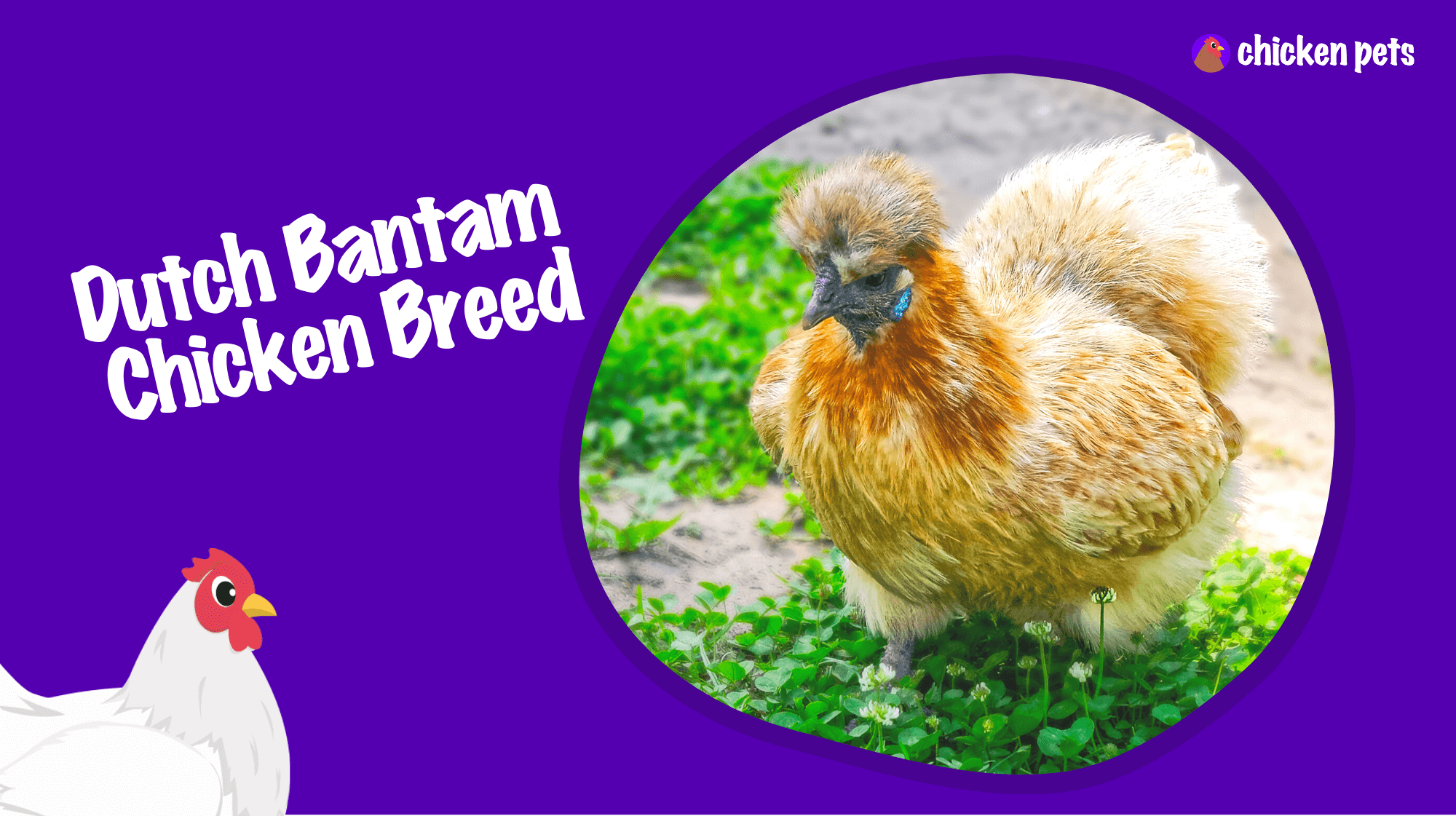
Dutch Bantam breeds of chickens, also known as Hollands or Dutch Splashes, are some of the smallest breeds of chickens available today. These adorable chickens typically weigh around 2 pounds, making them a perfect choice for those looking to keep a small-scale flock.
Dutch Bantams are easy to manage and often make great family pets, as they are gentle and don’t fly away. They lay fewer eggs than larger hens but have the same flavor and texture. Dutch Bantams may not be the best choice for large-scale egg production, but for someone wanting a few eggs from an endearing companion, this breed is sure to please.
Japanese Bantam chickens.
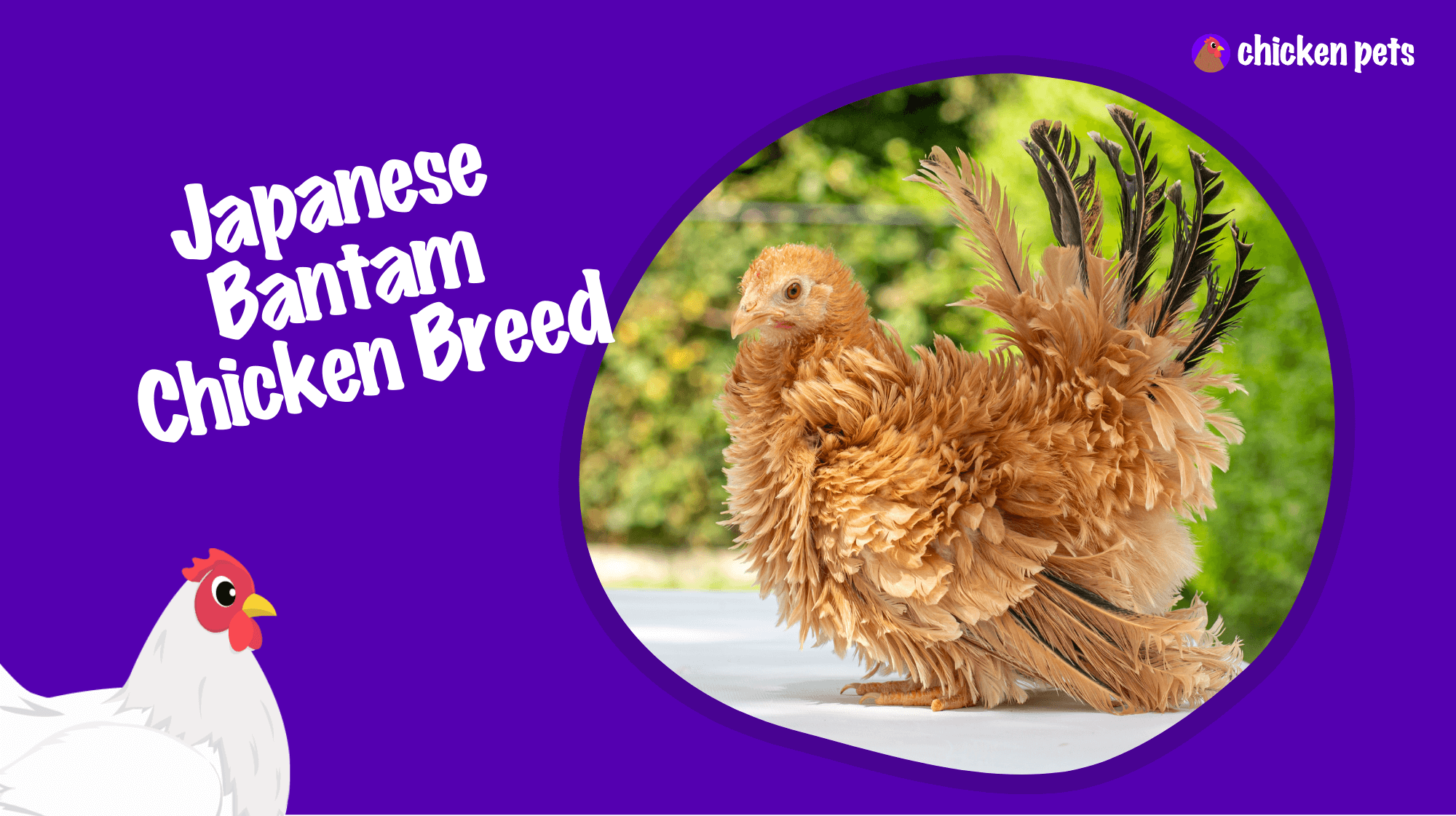
Japanese Bantam breeds are adorably tiny chickens that are perfect for small backyards. Despite their size, they lay a good amount of eggs compared to larger chickens and only require small amounts of feed.
They are usually mixed colored with perhaps black, white, or buff feathers, and most have a tufted head and muffled face. These little chickens are pretty hardy and can also make great pets for children, mainly owing to their sweet nature.
To keep these birds happy and healthy, provide them with plenty of space and food. Although they are light eaters, too little feed may lead to undernourishment, affecting their egg-laying capabilities. Japanese Bantams genuinely make the perfect addition to any backyard farm!
Cochin Bantam Chickens.
The Cochin Bantam is an adorable little bird that can bring great joy to any backyard. With its feathers puffing out in all directions and its low-clucking sounds, it’s easy to be charmed by this tiny, fluffy chicken. But many people don’t realize that there are two kinds of Cochin Bantams – those bred for exhibition and those meant for laying eggs.
Exhibition birds tend to be larger than those explicitly bred for egg production. They also come in various feather colors like white, black, blue, and even buff. Regardless of your type, though, one thing is sure – this breed of chicken is adorable!
Appenzeller Bantam chickens.
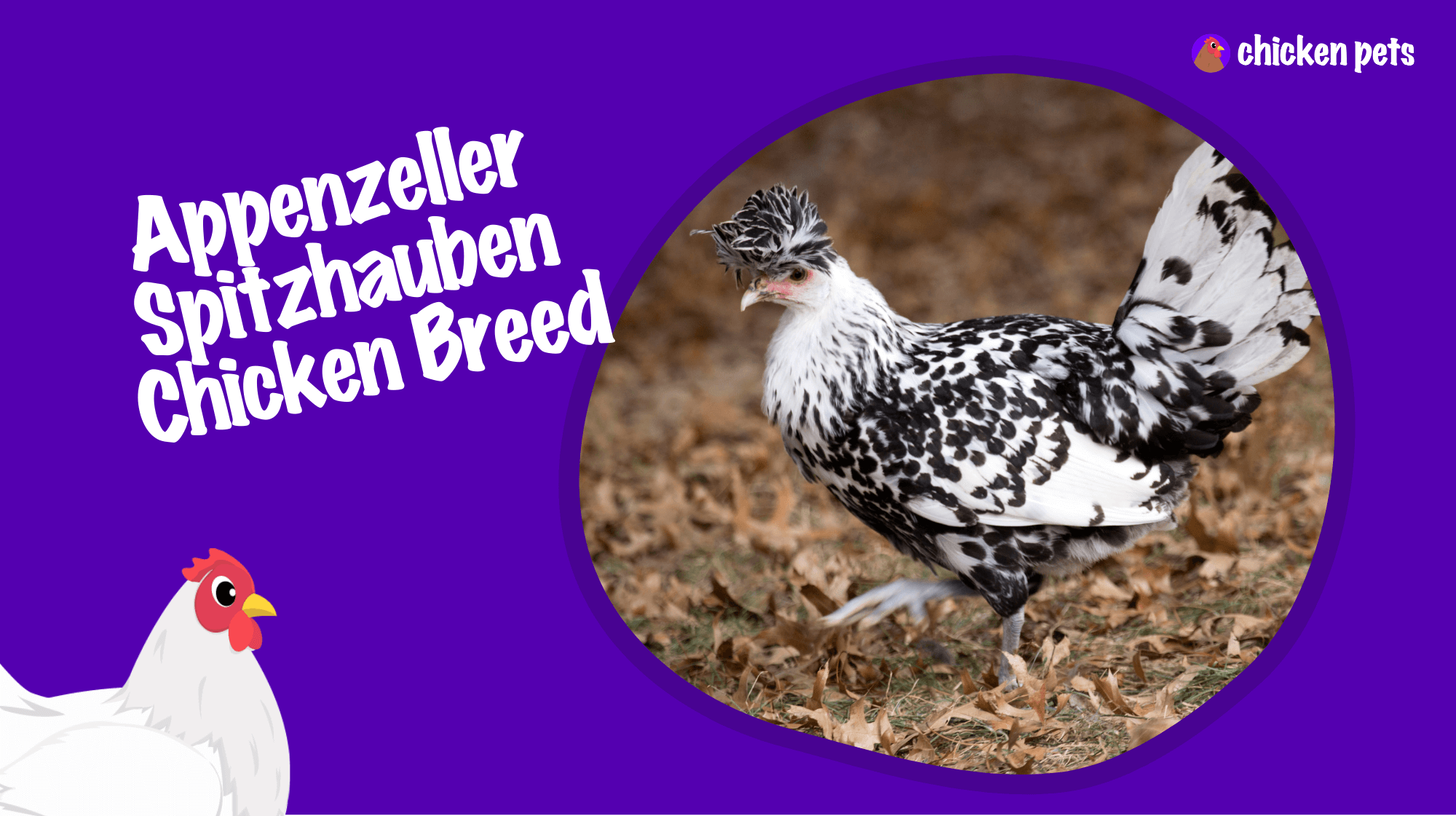
Appenzeller Bantam breeds are perfect for those looking for chickens that won’t take up too much space. These birds are a small breed and have been compared to feathery bumblebees due to their small size and energetic personalities.
They are adamant, making them ideal for free ranging in a garden or other backyard area. Moreover, they generally lay white eggs which can be used as ingredients in various dishes. Despite their lack of grand stature, Appenzeller Bantams make excellent pets and can easily fit into small households without taking up too much space.
Buff Brahma Bantams.
Buff Brahma Bantams are small chicken breeds that make extraordinary pet chickens. They have curious personalities and can be entertaining, making them a good choice for people searching for a backyard companion. Unsurprisingly, they also tend to be quieter than most other breeds.
Their size makes a living with and handling them more manageable, while their relatively calm demeanor is a nice change from more active chickens. Buff Brahmas are the right fit if you’re looking for a friendly chicken breed that requires less space but still yields decent egg production.
Ameraucana chickens.
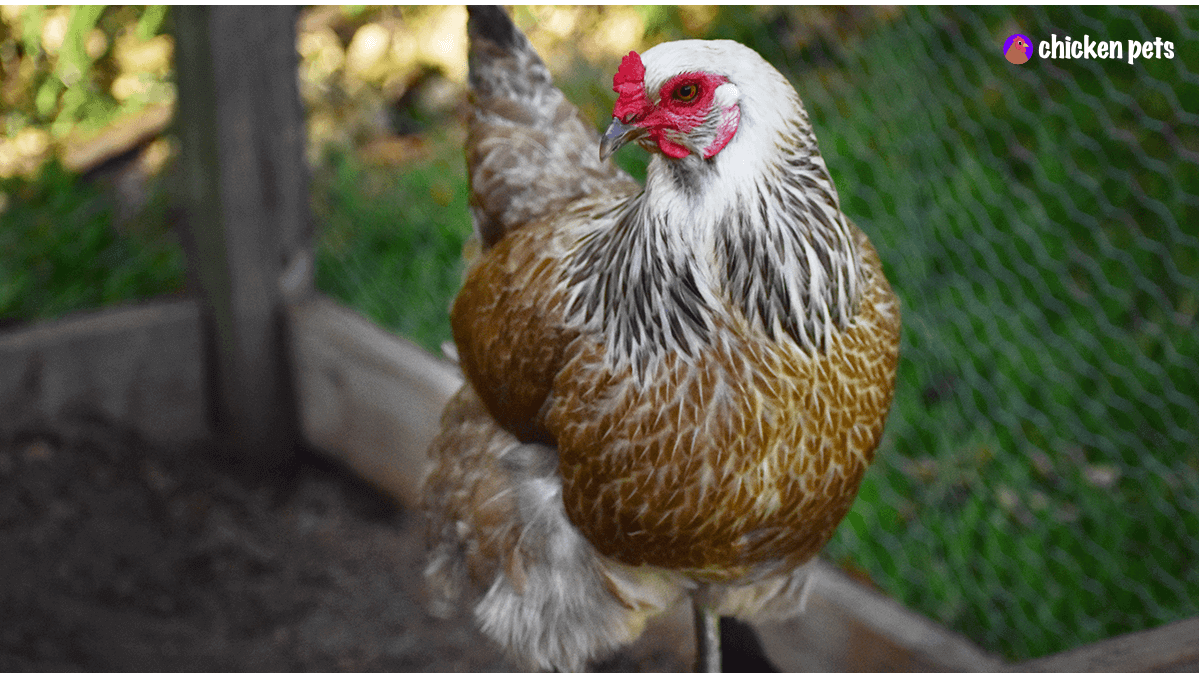
Ameraucana breeds are amongst the smallest chicken varieties available, and their size makes them a good choice for small backyard hens. Despite their diminutive stature, they are sturdy birds and feature unique feathered beards and muffs that add to their distinctive look.
Another benefit of these breeds is that they tend to have friendly personalities and lay eggs with distinctively colored shells in an array of shades, including blue, green, or pink!
Ancona chickens.
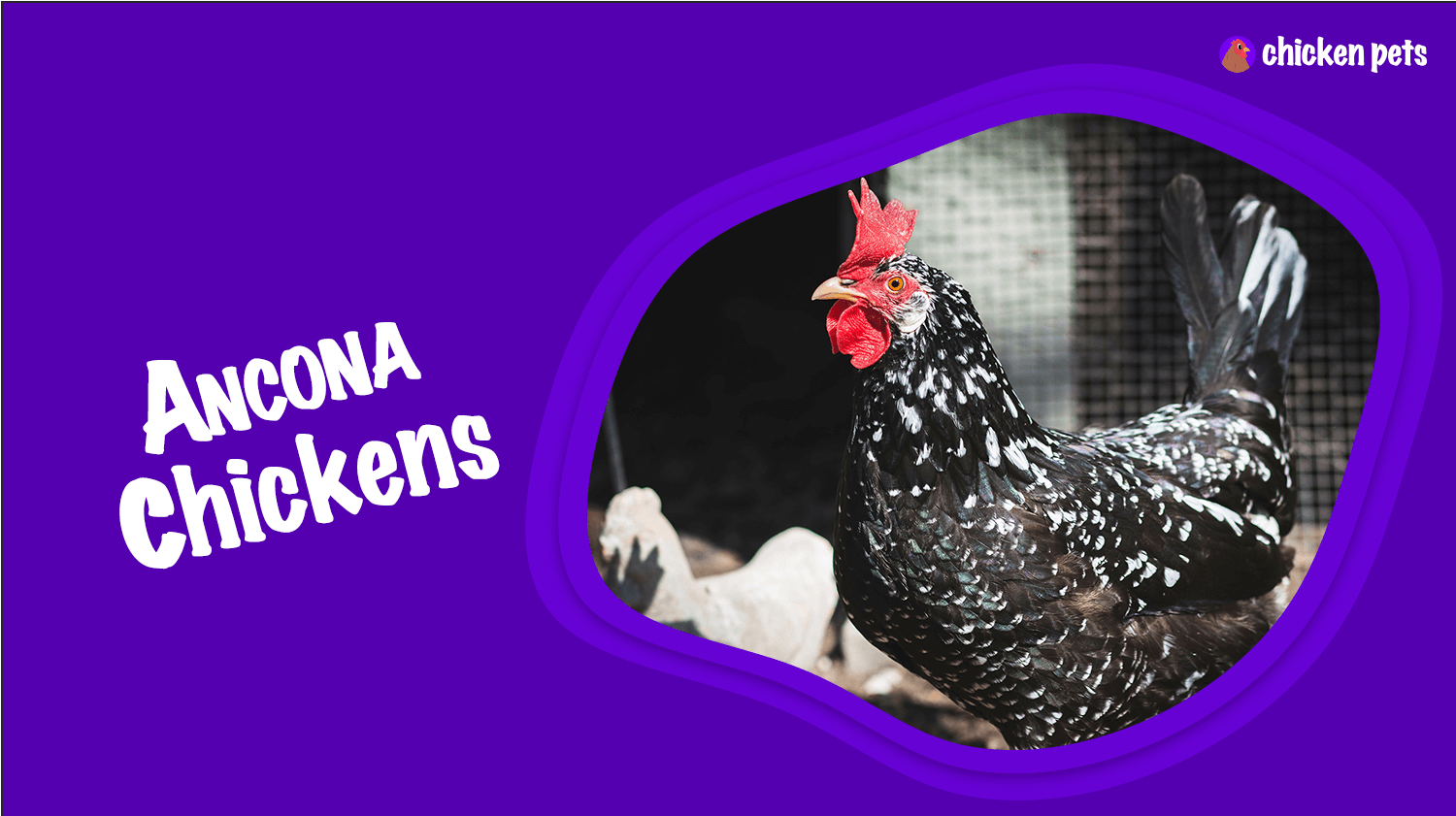
Ancona breeds of chickens are adorably small yet hardy- they make an excellent addition to any backyard flock. Ancona chickens are naturally friendly, quiet, and well-suited for backyards because their smaller size makes it possible to house more of them in a smaller space.
They produce large white eggs and have a reasonable egg production rate, even during the cold winter. Ancona breeds are pretty unique regarding their personality- since they range from existing breed lines with various characteristics- but all Ancona shares one trait; they love human attention! Knowing this, it’s no wonder these lovely birds make such wonderful companion animals!
Australorp chickens.

Australorps are a breed of smaller-than-average chicken, reaching about 6-7 pounds for a mature hen. The breed has many benefits, including heat tolerance, good egg production, and ease of care – making them ideal for various living conditions.
They have a gentle nature, rich black feathers with beige tips, and an ability to thrive even in the most extreme climates. Despite their small size, they are hardy birds that can provide delicious eggs regularly if given the right environment and nourishment. If you’re looking for an ideal backyard companion with benefits, then the Australorp is worth considering!
Barnevelder chickens.

Barnevelder breeds are a great choice if you want to keep chickens as pets but have limited space. They usually weigh between 5-7lbs and can fit easily into small enclosures. People often choose the Barnevelder breed because they are known to be extremely friendly and make excellent layers, especially in the springtime.
In addition, their dark brown eggs with specks of gold are an attractive and unique feature that people love! Barnevelders also require minimal care since they typically survive fine in coops without expensive heating systems or other amenities. All in all, these smaller chickens offer many benefits for the beginner backyard chicken keeper!
Bielefelder Kennhuhn chickens.
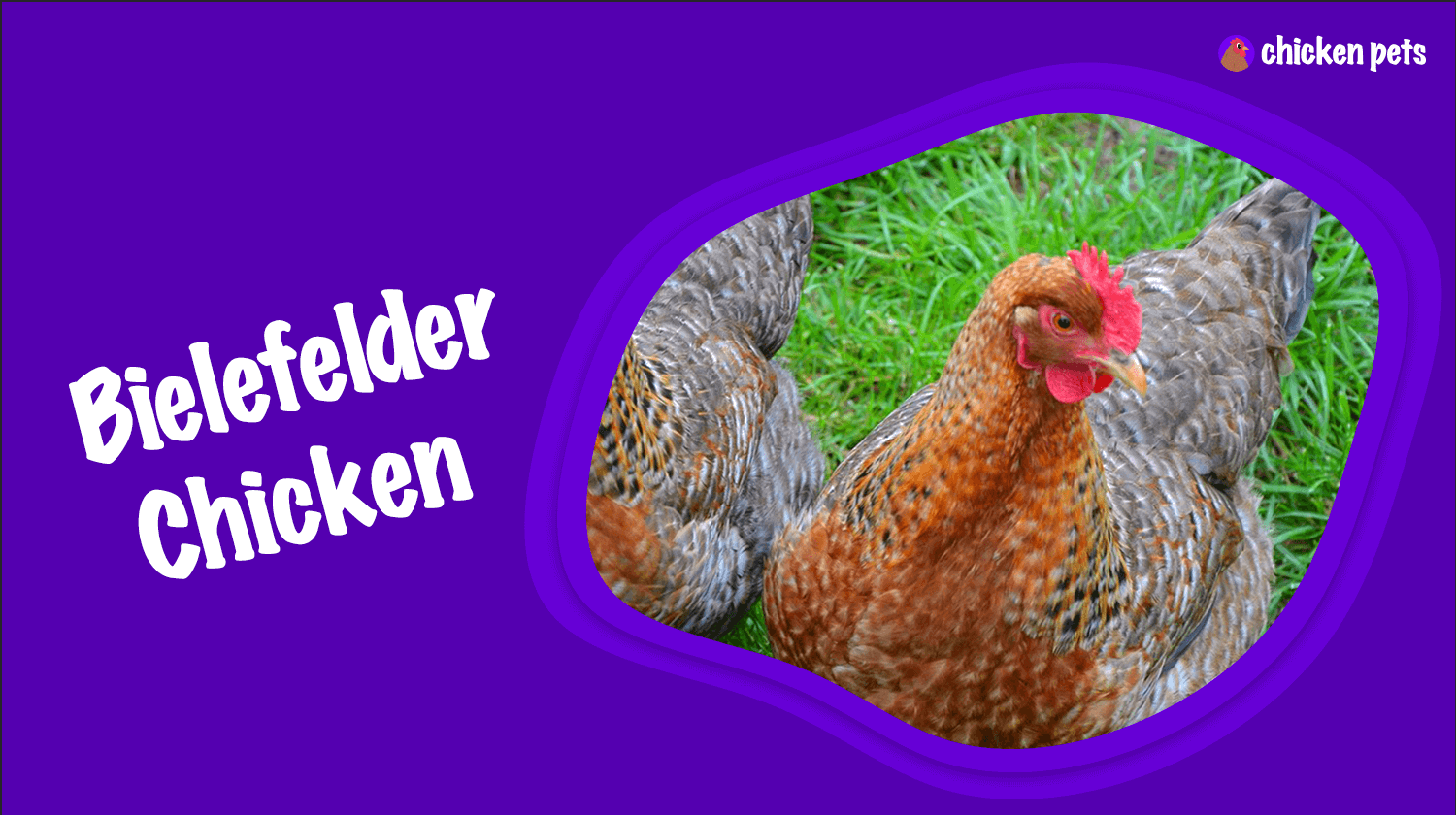
Bielefelder breeds tend to be a smaller variety of chicken than many other breeds. They usually only weigh 4-5 pounds when fully grown and make great additions to any flock if you are looking for small chickens. Bielefelders are friendly birds, known to be broody, and lay around 160 eggs yearly.
Their beauty is also unmatched by their distinctive coloring and solid black feathers that shine beautifully in the sun. The smaller size of Bielefelder breeds makes them easier to house and feed, making them perfect for those who don’t want a vast breed that could be difficult to manage.
Black Copper Marans chickens.
Black Copper Marans breeds are great for smaller areas like backyards and urban coops. Their size suits those looking for a low-maintenance bird that still produces delicious eggs. They are considered a medium-sized breed and average about 4 – 5 lbs as an adult.
Though slightly lower in egg production than other breeds, their eggs have a unique color and flavor that sets them apart. This breed is often recommended for beginners who are just starting out raising chickens in their backyard.
Blue Laced Red Wyandotte chickens.
Blue Laced Red Wyandotte chickens are a beautiful and unique addition to any backyard. Though they may be small in stature, don’t let that deter you from giving them a home. These birds may not lay very many eggs per week – usually one every three days – but they make up for it with their glorious appearance and friendly personalities.
Their feathery bodies are covered with a striking combination of blue, black, white, and rusty red feathers. They’re sure to bring you joy as they strut around your yard!
Buckeye chickens.
Buckeye breeds of chickens are an excellent choice for those looking to maintain a smaller flock. The most popular of these is the Buckeye, developed in Ohio by crossing Barred Plymouth Rocks with another chicken known as Buffed Cochin.
These birds usually range from 5-7 lbs and have a hardy temperament. They lay medium-sized eggs and provide just the right amount of egg production for the smaller family flock. Although unsuitable for large commercial farms, Buckeyes are an excellent choice for those wanting reliable egg layers and occasional meat producers in smaller flocks.
Chantecler chickens.
Chantecler chickens are a smaller breed of chicken and an excellent choice for any backyard farm looking for an egg-laying option. These birds can produce about 250 large eggs annually, making them quite versatile.
Another benefit to owning Chantecler chickens is that you don’t have to invest in larger housing – the chicks only need about 3.5 square feet each as adults, meaning that you can keep more of them in much less space than you might be used to.
On top of that, their gentle nature makes them one of the top choices for first-time poultry farmers who may not have had much experience with birds before. These famous little chickens offer much value regarding egg production and convenience – especially if you consider keeping chickens at home!
Crevecoeur chickens.
Breeds of chickens called Crevecoeur are some of the smallest you can find. They were developed in France during the late 1800s primarily for egg production, and many hobbyists and backyard farmers enjoy them for their unique coloring, small size, and friendly demeanor.
These chickens don’t require much space due to their miniature-sized bodies and are good at adapting to smaller confines, such as urban environments, given enough access to foraging areas.
Proper care includes a diet high in proteins, minerals, and vitamins, plus plenty of water available throughout the day. Furthermore, if offered, they tend to do well in a free-range or pasture-style environment.
Java chickens.
The Java breed of chickens is an excellent choice for smaller chicken breeds. As they are one of the smallest types of chickens, they need less space and require less in terms of food and care than larger breeds.
Since they originated in Spain and were bred to be kept as pets or egg producers, Javas can adapt to life in small households. Furthermore, their feed requirements are simple, so they can happily reside with other chickens while saving money on feed costs.
They have piqued curiosity among many chicken keepers due to their friendly nature and gracefully feathered bodies!
Polish chickens.
Polish chicken breeds are an excellent choice for a backyard flock due to their small size. After all, smaller chickens require smaller coops and runs, which makes them more manageable and cost-efficient than larger breeds.
The energetic nature of these birds will bring joy to any chicken keeper’s life! Hens typically lay large white eggs and make good mothers – a bonus for any backyard flock. The popular crested variety will surely capture the hearts of anyone with a passion for poultry, as they are both fun and friendly.
All in all, Polish breeds provide an opportunity to enjoy both beautiful birds and delicious eggs while not sacrificing too much space.
Silver Laced Wyandotte chickens.
Silver Laced Wyandotte breeds are a great choice if you want a smaller chicken to join your flock. These chickens are medium-sized, yet they’re still compact and easy to take care of. Not only do they require minimal maintenance, but their size also means that they don’t need much space.
This breed is one of the most common chickens to own, as it’s known for its unique patterned feathers and docile nature. With good care, these birds should be pretty hearty and healthy!
Sumatra chickens.
Sumatra chickens are a beloved breed of smaller chicken, perfect for those looking for a smaller bird to have in the coop. They can lay up to 150 creamy-tinted eggs annually and typically boast beautiful iridescent green-black feathers.
Sumatras make extraordinary pet chickens due to their gentle disposition, although they may need some special attention when taming if they have not been raised around humans before. As long as intruders don’t threaten them, these birds provide an entertaining distraction for farmers and deserve their reputation as fantastic watchdogs.
The unique beauty of Sumatra makes them a sought-after breed among poultry fanciers, and their calm temperament adds to the appeal.
Yokohama chickens.
Yokohama chickens are a popular breed of smaller chickens that Japanese farmers developed in the late 19th century. Known for their egg-laying ability and vibrant colors, these birds make great companions for beginner poultry enthusiasts.
They don’t need a lot of room to roam, and they’re relatively low maintenance compared to larger breeds. Plus, their eggs are an excellent source of nutrition, and you can easily find quality feed for them at most pet stores. So if you’re looking for a smaller breed of chicken, give Yokohamas a try!
Zitterhoen chickens.
Zitterhoen is an excellent choice for people with limited space to keep chickens or who don’t need many birds. They have many of the same characteristics as their larger counterparts but don’t require as much space.
Zitterhoen is also usually very friendly and curious, making them great pets for children. They are smaller and tend to need less food than other breeds. All in all, Zitterhoen chickens can make great additions to any flock, big or small!
Sultan chickens.
People looking for a backyard chicken breed should consider the Sultan. Not only are Sultans considered one of the oldest breeds in Europe, but they also happen to be relatively small in size. Due to their petite nature, they don’t need much space – perfect if you’re limited on room and don’t want an overly imposing bird!
While they lay fewer eggs than larger breeds, these birds make up for it with quiet pets that are friendly and pleasant. Sultans offer an outstanding balance between giving fresh eggs and being enjoyable companions. These chickens may be precisely what you’re looking for.
Belgian d’Anvers chickens.
Belgian d’Anvers chickens are a delightfully small breed of chicken, a true bantam. They come in various colors, including spangled, black mottled, jelly red, and splash. These birds tend to be friendly yet independent-minded chickens that enjoy foraging for their food.
They are pretty hardy in colder climates and can do well in confinement or an area with plenty of space to roam- the choice is yours! Belgian d’Anvers chickens make great pets and can provide you with some tasty eggs. Their small size, hearty nature, and varied coloring have made this breed popular amongst backyard chicken keepers.
Cubalaya chickens.
If you’re looking for a breed of chicken that doesn’t take up too much space, Cubalaya might be the answer for you. These smaller birds are known for their docile and friendly nature, making them a great beginner breed for those just starting to dabble in poultry.
Despite their diminutive size, these chickens still lay large eggs and make excellent meat birds if needed. You’ll want to provide extra protection from predators when keeping this breed outdoors; however, many residential-sized predators may view them as a tasty snack due to the smaller body type.
Rosecombe.
Rosecombe chickens are a great choice if you are looking for a smaller breed of chicken. These creatures only weigh an average of two and a half pounds and make excellent pets. They are also known to be relatively tame and docile, with hens laying, on average, up to three small eggs per week.
There is no denying that Rosecombe chickens will charm your backyard or farm setting. Whether you’re looking for just one or two birds for fun or a larger flock to provide fresh eggs, these breeds can provide both. With the proper care and attention, Rosecombe chickens will bring many enjoyable years into your life!
Belgian Bearded d’Uccle.
Belgian Bearded d’Uccle breeds of chickens are great for those with limited space, as they remain pretty small even into adulthood. Their typical adult size is just above 1 ft tall, making them much easier to keep than their larger counterparts.
They have a unique look that can easily stand out in a flock, with their muffs, feathered legs, and well-rounded bodies wrapped in multicolored plumage. As a bonus, these little beauties are known to be relatively quiet and easy to tame, making great pets if appropriately handled.
Sablepoot Chickens.
Sablepoot chickens are a unique breed of poultry that originated in the Netherlands during the early 20th century. They are distinguishable by their small size and feathered shanks that come in various colors, including buff, cuckoo, black, and even mottled.
As they only measure 8-10 inches from head to toe, Sablepoot chickens make excellent choices for those with smaller yard spaces or who want something quieter than larger breeds. Some owners report them as gentle and kind, making them perfect family animals for young kids. If you’re looking for a long-lived pet or backyard poultry friend, consider this special little breed!
How to care for small chicken breeds.
Small chicken breeds require special care and attention as they are more delicate than larger breeds. It is crucial to provide them with a safe and secure environment, clean bedding such as straw or wood shavings, ample space for free-ranging, and adequate shelter from extreme weather conditions.
These birds should also access healthy food, fresh water, and vitamins. Regular health checks should be conducted to ensure the chickens’ well-being. With the proper care and attention, small chicken breeds can provide countless benefits, including eggs, meat, entertainment value, companionship, and pest control.
Additionally, small chicken breeds are often more personable and friendly than their larger counterparts. Taking the time to learn how to care for your small chickens properly will ensure they live a long and healthy life.
It is important to remember that each breed of chicken has unique needs and requirements, so it is best to do thorough research before purchasing or adopting a new chicken. Doing this will ensure that you provide the appropriate living conditions for your birds and help them thrive in your backyard or homestead.
Frequently asked questions about little chickens.
What breed of chicken stays small?
The most popular breeds of chickens known to stay small include Bantam Chicken Breeds, Silkies, and Sebrights. Bantams are miniature versions of larger chicken breeds, usually weighing less than 2 pounds at maturity.
Silkies have feathers resembling fur and an extremely tame temperament, making them a great pet chicken choice. Sebright Chickens are true bantams who lay small white eggs and remain relatively small in size even as adults.
Other popular choices for smaller chicken breeds include Pekin Bantams, Polish Chickens, and Old English Game Bantams. These breeds make excellent pets with their playful personalities and gentle nature.
Depending on the breed, smaller chickens require less space than larger breeds, making them ideal for urban or suburban settings. They also lay fewer eggs than larger breeds and are generally quieter, meaning they can make great backyard companions without disturbing the neighbors.
Small chickens can be easily cared for with minimal space and resources, making them an excellent option for anyone looking to raise chickens in an apartment or small yard.
If you’re considering raising a flock of tiny chickens, be sure to research the breed you choose so you know what to expect in terms of size, egg production, temperament, noise level, and any other specific care requirements.
What are dwarf chickens?
Dwarf chickens are a type of small chicken breed that has been bred to remain smaller than many other standard-sized chickens. Dwarf chickens typically weigh only 2–3 pounds at maturity, making them the smallest of all chicken breeds. Popular dwarf chicken breeds include Serama Bantams, Polish Chickens, and Sebrights.
They have short legs and combs, and dense feathers for warmth in cold climates. Dwarf chickens also tend to be friendly and curious, making them great pets for children or those who love animals.
Additionally, they lay fewer eggs than larger breeds and require less space, food, and maintenance, making them ideal for raising a small flock of backyard chickens without investing too much time or resources into their care.
What are tiny roosters called?
Tiny roosters are typically called bantams or miniature chickens. Bantam roosters are a breed of chicken bred to remain smaller than many other standard-sized chickens.
Bantam roosters typically weigh only 2–3 pounds at maturity, making them the most miniature chicken breeds. They have short legs and combs, and dense feathers for warmth in cold climates.
Bantam roosters also tend to be friendly and curious, making them great pets for children or those who love animals. Popular bantam rooster breeds include Sebright Chickens, Silkies, and Pekin Bantams.
Do mini chickens lay eggs?
Yes, mini chickens do lay eggs. Mini chickens are a type of chicken breed, so they share the same characteristics as other chickens and lay eggs just like regular-sized chickens.
However, due to their smaller size, the eggs they lay tend to be smaller too. There is no way to guarantee that mini chickens will produce a certain number of eggs yearly since it depends on many factors such as age, nutrition, health, and season. Generally, it is estimated that mini chickens can lay between 150-200 small eggs annually.
What chicken breed is the smallest?
The smallest breed of chicken is the Serama. This breed was developed in Malaysia and is known for its small size, weighing just a few ounces when fully grown.
The chickens have a compact bodies, making them ideal for showing and exhibition. They are also considered very friendly and pleasant chickens, as they enjoy being handled by humans. They lay tiny eggs that are proportionate to their size but, unfortunately, cannot produce large quantities of eggs as some other breeds can.
Nevertheless, these delightful little birds make great pets and flock members!
What are the little chickens called?
The baby chickens are known as chicks. Chicks usually hatch from their eggs after 21 days of incubation. In some breeds, the chicks can be identified by sex when they hatch, while in others, the gender is not known until they are older.
The feathers and coloring of baby chicks vary greatly depending on the breed of chicken. Most baby chicks are yellow with spots, but some may have gray or black stripes. Once a babe matures, it will develop its adult characteristics like color and comb type.
What is the friendliest chicken breed?
The friendly, pleasant, and personable Silkie chicken is widely considered the most social breed of chicken. A small bantam breed, Silkies have a silky coat of feathers with an almost fluffy appearance that belies their gentle and calm temperament.
They are known to be very affectionate and curious chickens who often seek your attention and love interacting with humans. They can even learn to recognize their names! Silkies are an excellent choice for those looking for a pet chicken that loves to be held or cuddled.
Furthermore, they also tend to get along well with other animals in the backyard flock, such as ducks, guineas, sheep, goats, dogs, and cats. The Silkie is an excellent choice if you’re looking for a family-friendly addition to your farm!
Which bantams are the smallest?
The minor bantams are the Serama, a breed from Malaysia. The Serama can weigh as little as 4 ounces and stand only 8 inches tall! They come in various colors and have feathered crests, making them unique among other breeds of chickens.
Another minor bantam is the Sebright, an English breed that stands about 10 or 11 inches tall and typically weighs between 24 and 28 ounces. The Sebright also has unusual coloring, sporting lacing on its feathers instead of solid colors.
Lastly, one of the smallest bantams is the Dutch Bantam which stands at 9 to 12 inches tall and weighs around 20 to 24 ounces. This breed is known for its bright colors and patterned feathers.
What breed of rooster is small?
A few rooster breeds are considered relatively minor, such as the Sebright, Yokohama, and Penedesenca. The Sebright is a tiny breed with beautiful golden plumage and feathered legs. The Yokohama is also a smaller breed with soft gray feathers. The Penedesenca is another smaller breed with unique feather markings and striking colors. These breeds all make good pet birds due to their manageable size and friendly personalities.
What are small hens called?
Small hens are known as bantams. Bantam chickens are miniature versions of standard-sized chickens and can range from just a few ounces to two or three pounds.
They are prized for their unique appearance, docile personalities, and small egg production. Bantams come in various colors, shapes, and sizes, offering endless options to choose from if you’re looking for a pet chicken or want to start your flock!
What are the three types of chicken?
There are three main types of chickens: egg-laying breeds, meat breeds, and dual-purpose breeds.
Egg-laying breeds are used primarily for producing eggs. Famous examples include Leghorns, Plymouth Rocks, and Rhode Island Reds. Depending on their breed, these birds have large quantities of white or brown eggs.
Meat breeds were created by selectively breeding chickens for size and growth rate. These larger birds grow quickly and are suitable for consumption at a younger age than other breeds. Examples of famous meat chickens include Cornish Crosses, White Rocks, and Jersey Giants.
Finally, dual-purpose breeds were developed to provide eggs and meat in the same bird. These birds generally lay fewer eggs than egg-laying breeds, but they are larger than most meat chickens. Popular dual-purpose species include Orpingtons, Wyandottes, and Australorps.
Each type of chicken has unique characteristics that make them suitable for different purposes. Egg layers produce large quantities of eggs quickly, while meat breeds provide tender and flavorful meat. Dual-purpose birds offer a balance between the two options and can be used for both purposes with some degree of success. Choosing the correct type of chicken for your needs is vital to get the best results from your poultry project!
What kind of chicken lays small eggs?
The most common type of chicken that lays small eggs is the Leghorn. This breed is known for producing large quantities of white eggs, but they are generally on the smaller side.
Other breeds that lay tiny eggs include Brahma, Minorca, and Hamburgs. Generally, bantam chickens (smaller breeds) also produce smaller eggs than their larger counterparts.
Why is my chicken laying tiny eggs?
If your chicken is laying tiny eggs, it could be several things. It could be caused by genetics, age, nutrition, or general health. Older chickens tend to lay smaller eggs than younger chickens.
If your chicken does not have access to enough calcium in its diet, this can also cause a small egg size. Additionally, if your chicken is ill or stressed, it might produce abnormal eggs. Ensure adequate nutrition and care for your birds for the healthiest eggs possible!
What chicken lays small brown eggs?
Popular breeds that lay small brown eggs include the Rhode Island Reds, Barnevelders, Marans, and Welsumers. These chickens are dual-purpose birds used for both eggs and meat production.
They tend to lay smaller eggs than other egg-laying breeds but provide ample nutrition in each egg. Additionally, these chickens often have more flavorful meat than other breeds.

